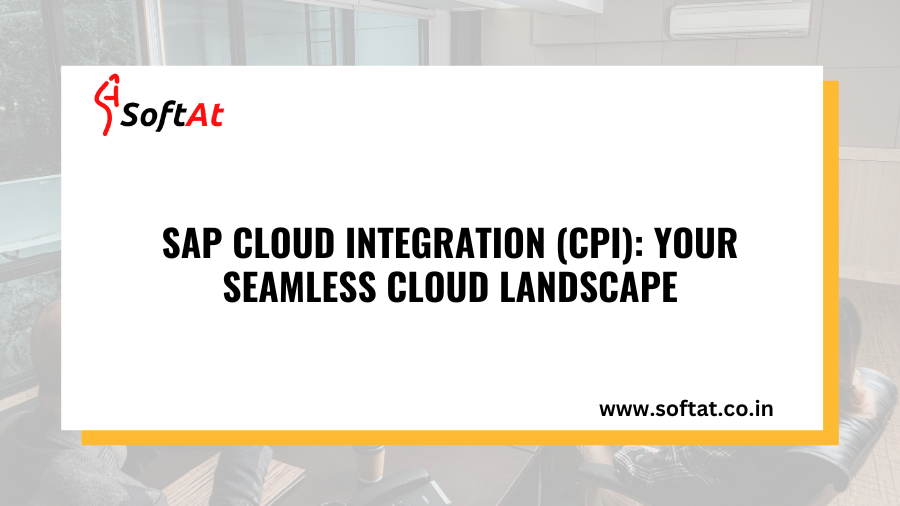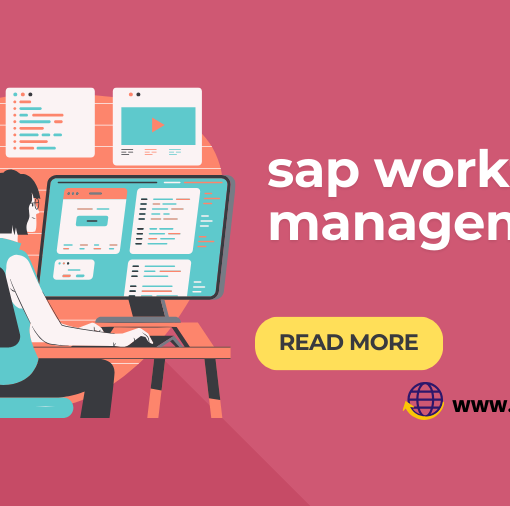In today’s digital landscape, seamless communication between applications is paramount for businesses to function efficiently. SAP Cloud Integration (CPI), formerly known as SAP Cloud Platform Integration (HCI), emerges as a powerful tool for organizations utilizing the SAP Cloud platform (SAP BTP). This blog delves into the core functionalities, benefits, and best practices of SAP CPI, empowering you to unlock its potential for streamlined data exchange within your SAP BTP environment.
What is SAP Cloud Integration (CPI)?
SAP CPI acts as a cloud-based integration platform within the SAP BTP ecosystem. It facilitates seamless data exchange between various applications, both within the SAP landscape (SAP S/4HANA, SuccessFactors, etc.) and with external systems like Salesforce, NetSuite, or custom applications. By enabling this communication, SAP CPI eliminates data silos and fosters a more integrated business environment.
Key Functionalities of SAP CPI:
- Pre-built Adapters: SAP CPI offers a rich library of pre-built adapters that simplify communication with various SAP and non-SAP systems. These adapters handle data translation and protocol conversion, reducing development efforts.
- Integration Flows: Developers can build and manage integration flows within SAP CPI. These flows define the logic for data transformation, routing, and error handling during the integration process.
- API Management: SAP CPI incorporates API management functionalities, enabling organizations to expose internal data and functionalities as secure APIs for consumption by external applications or partners.
- Event-Driven Architecture: SAP CPI supports event-driven architectures, allowing applications to react to real-time events and trigger automated workflows based on specific data triggers.
Benefits of Utilizing SAP Cloud Integration (CPI):
- Simplified Cloud Integration: The pre-built adapters and user-friendly development environment within SAP CPI streamline the integration process, reducing development time and effort.
- Enhanced Agility and Scalability: The cloud-based nature of SAP CPI allows for rapid scaling to accommodate changing business needs and growing data volumes.
- Improved Data Visibility and Governance: SAP CPI facilitates centralized data exchange, enhancing data visibility and enabling better data governance practices.
- Reduced Operational Costs: Streamlined integration processes and automated workflows lead to reduced operational costs associated with manual data exchange and manipulation.
- Increased Innovation: By eliminating data silos and fostering seamless communication, SAP CPI empowers organizations to unlock new possibilities for innovation and process automation.
Best Practices for Effective Utilization of SAP CPI:
- Standardization and Reusability: Develop reusable integration flow components and utilize consistent naming conventions for better maintainability and scalability of your integrations.
- Error Handling and Monitoring: Implement robust error handling mechanisms within your integration flows to identify and address potential issues during data exchange. Leverage monitoring tools provided by SAP CPI to ensure smooth operation.
- Security Considerations: Utilize the security features within SAP CPI to secure your integrations. This includes user authentication, authorization, and data encryption to safeguard sensitive information.
- Integration with External Tools: Consider integrating SAP CPI with external tools for advanced functionalities like data quality checks or complex data transformations.
- Stay Updated: The SAP BTP landscape is constantly evolving. Keep yourself updated on the latest features and functionalities of SAP CPI to maximize its effectiveness.
Beyond the Basics: Advanced Considerations for SAP CPI
For organizations seeking to unlock the full potential of SAP CPI, consider these advanced approaches:
- API Design Best Practices: Adhere to industry best practices for API design to ensure your APIs are well-documented, secure, and user-friendly for external consumers.
- Process Automation: Leverage SAP CPI’s event-driven architecture to automate business processes triggered by specific data events, improving operational efficiency.
- Microservices Architecture: Consider adopting a microservices architecture for your cloud applications. SAP CPI can facilitate communication and data exchange between these microservices, promoting flexibility and scalability.
Conclusion: SAP CPI – Your Gateway to a Seamlessly Integrated Business Landscape
SAP Cloud Integration (CPI) serves as a cornerstone for streamlined communication and data exchange within the SAP BTP environment. By understanding its functionalities, benefits, and best practices, you can leverage SAP CPI to unlock the power of cloud integration, fostering a more agile, efficient, and data-driven business environment. As organizations continue their cloud migration journeys, SAP CPI will play a critical role in ensuring seamless connectivity and unlocking the full potential of their cloud-based applications.





